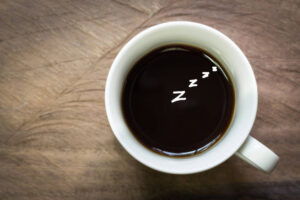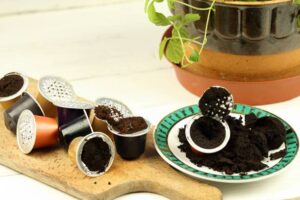For many, the perfect cup of coffee is the catalyst that jumpstarts the day. In recent years, the ritual of coffee making has expanded beyond the percolator and even the espresso machine into the realm of the patiently brewed cold coffee we know as cold brew. The delightful concoction that is cold brew coffee has taken the world by storm with a
smooth, almost creamy mouthfeel, alongside mountains of bold flavor profiles that are natural to the slow extraction process. Not to mention, cold brew appeals to all, from seasoned coffee aficionados to DIY enthusiasts thirsty for a new challenge. In this definitive guide, we unravel the enigma of cold brew coffee, empowering you to create dreamy cold concoctions at home.
Table of contents

What Is Cold Brew Coffee?
Cold brew coffee stands apart in the world of caffeinated beverages for its unique brewing process. Unlike traditional coffee, which relies on hot water to extract flavor quickly, cold brew coffee is created by steeping coarsely ground coffee beans in cold water for an extended period, typically 12 to 24 hours. This methodical approach allows for a slow extraction of flavors, resulting in a concentrated coffee that is distinct for its smooth, rich taste that lacks the acidity and bitterness often associated with its hot-brewed counterparts. Once the brewing process is complete, the mixture is filtered to produce a clean, robust coffee concentrate that can be diluted with water or milk and enjoyed over ice. The inherent simplicity and versatility of cold brew coffee make it an appealing choice for coffee lovers seeking a refreshing twist on their daily caffeine fix.
How Cold Brew Is Made
Creating cold brew coffee is a straightforward yet rewarding process that requires minimal equipment and ingredients but plenty of patience. At its core, the method involves only two primary components: coarsely ground coffee beans and cold water. The coarseness of the grounds is critical; too fine, and the coffee can become overly bitter, too coarse, and the flavor extraction will be inadequate.
- Start with Quality Beans: Choose a high-quality coffee bean that suits your taste preferences. Light to medium roasts work especially well for cold brew, offering a balanced flavor profile.
- Grind Your Beans: Grind the beans to a coarse consistency, akin to breadcrumbs. This ensures optimal flavor extraction without over-extraction.
- Mix Grounds and Water: Combine the grounds with cold, filtered water in a large jar or pitcher. A good ratio to start with is 1:8, one part coffee to eight parts water, but this can be adjusted based on your taste preferences.
- Steep: Cover the mixture and leave it to steep at room temperature or in your refrigerator for 12 to 24 hours. The duration of steeping will affect the concentrate’s strength and flavor profile.
- Strain the Brew: After steeping, strain the coffee through a fine-mesh sieve, cheese cloth, or a coffee filter to remove the grounds. The result is a smooth, concentrated coffee that serves as the base for your cold brew creations.
- Serve and Enjoy: To serve, dilute the concentrate with water or milk to your liking. Cold brew coffee is versatile and can be enjoyed plain over ice, sweetened, or even used as a base for coffee-infused cocktails.
Once you’ve mastered the basic process, experiment with brewing times, different types of coffee, and dilution ratios to find your perfect cold brew concoction. The real beauty of cold brew coffee lies in its simplicity and the endless possibilities for customization.

Embark on the Cold Brew Revolution
Why the World Can’t Get Enough of It
Cold brew coffee’s allure is rooted in its distinguishing features. This brewing method, which entails slow brewing coffee grounds with cool or room temperature water over an extended period, produces a coffee that’s low in acidity yet high in intensity of flavors. Unlike hot
brewing methods, cold brew allows for greater extraction of coffee’s natural sugars, oils, and bitter compounds, resulting in a complex and nuanced flavor profile that ranges from chocolatey and nutty to fruity and floral. Its smooth texture and lower acid content make it a
gentle, yet flavorful, coffee experience, enjoyed by millions worldwide.
What You Need to Make Cold Brew Coffee
Cold brew might seem like a sophisticated coffee trend, but in reality, it’s quite simple to make at home. The essence of making cold brew coffee lies in its two main ingredients: more coffee grounds than you’d typically use for other brewing methods, and a considerable amount of time. But what about the equipment and other essentials? Here’s what you need:
The Equipment
Contrary to popular belief, you don’t need fancy gadgets to make cold brew. A basic mason jar or a French press you might already have in your kitchen will do the job perfectly. However, for those who prefer a dedicated cold brew maker, the Toddy Home Model comes highly recommended by Easto and Rounds. “Their equipment is easy to use, clean, and incredibly affordable,” Rounds comments. This device is specifically designed for cold brewing, making the process even simpler and more foolproof.
The Water
While tap water can suitably be used for making cold brew, the notable advice from experts is to use water that is rich in minerals. These minerals play a crucial role in optimally extracting the flavors from coffee. Jessica Easto, author of Craft Coffee: A Manual, cautions against using distilled water due to its lack of minerals. The right kind of water can make a significant difference in the taste of your cold brew.
The Coffee Beans
Cold brew’s forgiving nature means you don’t necessarily have to opt for high-priced, single-origin coffee blends. Since this method requires using a larger quantity of coffee grounds, Easto recommends choosing a more affordable blend with dark, warm, or earthy flavor notes such as chocolate, warming spices, or nuts. These types of blends will result in a deliciously rich and robust cold brew. Additionally, if you find yourself running low on fresh beans, cold brew offers the perfect solution. “If you’re in a pinch, don’t hesitate to mix leftover beans or even use beans that may not be at their peak freshness,” Easto suggests. This versatility underscores cold brew’s convenience and the ability to deliver great flavor even when the coffee grounds aren’t perfect.
How to Make Cold Brew Coffee
Ingredients
To make 1 1/2 quarts of cold brew coffee, you’ll need:
- 1 pound coffee beans, ground for French press or coarser
- A large pitcher or glass jar (to hold 1 1/2 quarts), plus a lid or cover
The Method
- Combine 1/2 pound of ground coffee with 6 cups of cold water in a large pitcher or glass jar. Let stand for 5 minutes.
- Add the remaining coffee grounds and 3 cups of cold water, making sure all the grounds are fully saturated.
- Cover, and allow the mixture to steep at room temperature for 8 to 12 hours, or in the refrigerator for up to 24 hours.
This simple process requires little more than patience and results in a rich, smooth concentrate that can be diluted with water or milk to your preference.
Using Cold Brew Concentrate
There’s a big difference between cold brew coffee and cold brew concentrate. “[Cold brew concentrate] is simply a very strong solution of coffee solubles (the stuff that imparts flavor and texture) and water. It’s too strong to enjoy as is, so when it’s time to drink it, you dilute the concentrate with fresh water to taste,” says Easto. Most of the cold brew options that you’ll find in the grocery store are concentrate, such as Grady’s New Orleans-Style.
If you want to make cold brew concentrate at home, try our recipe. Easto recommends using a ratio of one part coffee to six parts water.
Storing Cold Brew
Once you’ve brewed your cold brew coffee, it should be stored in an airtight container—such as a sealed mason jar—in the refrigerator and consumed within three days for optimal flavor.
If you purchased cold brew concentrate from the store, read the label to see the manufacturer’s recommendation for storage and use.
Benefits of Cold Brew at Home
More Than a Trend, It’s a Lifestyle
Making cold brew at home not only offers significant cost savings in comparison to frequenting a coffee shop but also provides the perfect platform for personalization. Ever wanted to create your signature coffee blend? Well, now you can. Homebrewing empowers you to select beans that suit your palate, adjust the strength, and experiment with different roasts. Additionally, there’s the satisfaction of knowing that your brewing process is environmentally friendly since cold brew requires no electricity to brew and reduces the production of waste like filters and pods. It’s not just about your taste buds; it’s a commitment to a more sustainable lifestyle.
The Must-Haves for Home Cold Brew
Setting the Stage for Brewing Success
Just like hot coffee, the quality of your cold brew coffee is heavily influenced by the quality of your ingredients and the tools you use. Fresh, coarsely ground coffee beans are your foundation. Opt for a medium to dark roast if you enjoy a richer flavor or a light roast for a brighter profile.
Choosing the right water is vital too—use filtered or bottled water to avoid any chlorine that can taint your brew. For equipment, a large jar, French press, or dedicated cold brew maker are suitable. You’ll also need a mesh strainer or cheesecloth for filtering and an airtight container for storage.
Crafting the Perfect Cold Brew at Home
Mastering the Art of Patience and Precision
The base recipe for cold brew is remarkably simple—combine grounds and water, steep, then strain. But within this simplicity lies the critical importance of precision. A good starting point is a 1:8 coffee-to-water ratio. If your coffee is too weak or too strong, adjust the ratio for the next batch.
Place your coffee grounds in the brewing vessel, add the water, and stir to ensure all the grounds are soaked. Cover and leave to steep for 12-24 hours at room temperature or in the fridge. The longer you steep, the stronger and more concentrated the coffee will be.
Tips to Elevate Your Cold Brew Game
From Good to Great with Clever Tweaks
Fine-tune your cold brew to match your palate. Taste your batch periodically to understand how brew time affects the strength and flavor. Enhance your brew’s flavor profile by experimenting with different beans and roast levels. For a refreshing twist, consider adding flavorings like cinnamon sticks or vanilla beans during the brewing process.
To ensure a hassle-free experience, know the art of the grind. Too fine a grind may result in over-extraction, while too coarse may lead to a weak brew. A medium grind akin to sea salt is a safe bet. Remember, this is your cold brew; there are no rules, only gentle guidelines.
Serving Your Cold Brew with Panache
The Final Act of Cold Brew Seduction
When it comes time to serve, remember that cold brew is as much about the experience as it is about the taste. Serve it over ice, or with a splash of your milk of choice, or even straight up if that’s your preference. Play with temperatures and serving styles to find what you enjoy most.
Presentation is key — a sprinkling of cinnamon or a twist of citrus can add a touch of elegance. In the warmth of summer, frozen coffee cubes keep your brew undiluted and chilled. Grab a fancy glass, pour your cold brew, and savor the art of your labor.

Conclusion
Crafting cold brew coffee at home is truly a labor of love that promises a remarkable coffee experience. From the initial selection of beans to that first invigorating sip, each step imparts a touch of your personal flair. By inviting you to join the cold brew coffee community, we encourage you to seek feedback, share your success stories, and learn from others.
Not only will you delight in a delicious cup of coffee made precisely to your liking, but you’ll also contribute to a more eco-conscious way of enjoying your favorite brew. Home cold brewing is about much more than a great cup of coffee; it’s about craftsmanship, sustainability, and the pure pleasure of creation. Take the plunge, and enjoy the countless sips of your uniquely crafted home cold brew.






